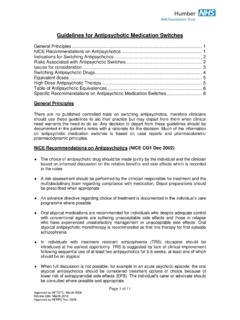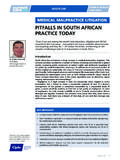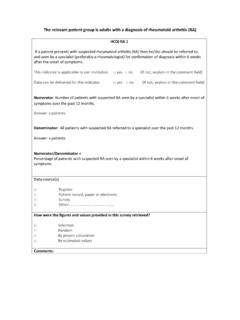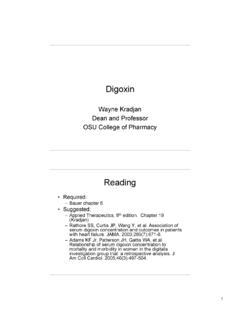Transcription of Guidelines for Antipsychotic Medication Switches
1 Page 1 of 11 Approved by HFTDTC: March 2009 Review date: March 2012 Approved by HERPC Nov 2009 Guidelines for Antipsychotic Medication Switches General Principles .. 1 NICE Recommendations on Antipsychotics .. 1 Indications for Switching Antipsychotics .. 2 Risks Associated with Antipsychotic Switches .. 2 Issues for consideration .. 3 Switching Antipsychotic Drugs .. 4 Equivalent doses .. 5 High Dose Antipsychotic Therapy .. 5 Table of Antipsychotic Equivalences .. 6 Specific Recommendations on Antipsychotic Medication Switches .. 8 General Principles There are no published controlled trials on switching antipsychotics, therefore clinicians should use these Guidelines to aid their practice but may depart from them when clinical need warrants the need to do so.
2 Any decision to depart from these Guidelines should be documented in the patient s notes with a rationale for the decision. Much of the information on Antipsychotic Medication Switches is based on case reports and pharmacokinetic/ pharmacodynamic principles. NICE Recommendations on Antipsychotics (NICE CG1 Dec 2002) The choice of Antipsychotic drug should be made jointly by the individual and the clinician based on informed discussion on the relative benefits and side effects which is recorded in the notes A risk assessment should be performed by the clinician responsible for treatment and the multidisciplinary team regarding compliance with Medication .
3 Depot preparations should be prescribed when appropriate An advance directive regarding choice of treatment is documented in the individual s care programme where possible Oral atypical medications are recommended for individuals who despite adequate control with conventional agents are suffering unacceptable side effects and those in relapse who have experienced unsatisfactory management or unacceptable side effects. Oral atypical Antipsychotic monotherapy is recommended as first line therapy for first episode schizophrenia In individuals with treatment resistant schizophrenia (TRS) clozapine should be introduced at the earliest opportunity.
4 TRS is suggested by lack of clinical improvement following sequential use of at least two antipsychotics for 6-8 weeks, at least one of which should be an atypical When full discussion is not possible, for example in an acute psychotic episode, the oral atypical antipsychotics should be considered treatment options of choice because of lower risk of extrapyramidal side effects (EPS). The individual s carer or advocate should be consulted where possible and appropriate Page 2 of 11 Approved by HFTDTC: March 2009 Review date: September 2012 Approved by HERPC Nov 2009 Indications for Switching Antipsychotics Persistent positive or negative symptoms Relapse despite proven compliance Persistent distressing adverse drug reactions Change of formulation to assist concordance switch to depot Risks Associated with Antipsychotic Switches Relapse or destabilisation, should the replacement drug be less effective than the former.
5 If the side effect profile experienced by the individual remain unacceptable there are further risks of discontinuation Reduced compliance due to worsening of mental state and/or adverse drug reactions Deterioration in physical condition due to adverse drug reactions and/or other concomitantly prescribed Medication Exacerbation of condition due to stress and anxiety from the switch Potential Medication errors during the cross over Cholinergic rebound, where the second drug has less cholinergic activity. Symptoms may be severe but relatively brief and predictable- nausea, vomiting, restlessness, anxiety, insomnia, fatigue, malaise, myalgia, diaphoresis, rhinitis, paraesthesia, GI distress, headaches and nightmares.
6 Withdrawal dyskinesia, rebound akathisia, rebound dystonia and worsening of tardive dyskinesia may in part be related to cholinergic rebound. Combined adverse drug reactions (ADRs) Other discontinuation reactions Neuroleptic malignant syndrome (NMS) has been reported during many Antipsychotic Switches Page 3 of 11 Approved by HFTDTC: March 2009 Review date: September 2012 Approved by HERPC Nov 2009 Issues for consideration Advise individual that switch of Medication is associated with increased risk of relapse Additional support and monitoring should be in place for individuals during the switch.
7 Where applicable this should be via the Care Program Approach process Where switching is considered while in primary care additional support and monitoring should be in place Formulate relapse prevention strategy Involve carer if appropriate Ensure full care plan in place to support and monitor individual during and post switch Allow at least 3 months at full therapeutic dose to assess full impact, unless reasons dictate otherwise serious deterioration in mental state or risk issues, serious side effects etc Differentiate change in presentation that may be due to reduction in side effects from increased Antipsychotic effect- particularly over first six weeks If no improvement at all after six weeks exclude non- compliance, substance misuse and inadequate dosage Gradually discontinue anticholinergic or antiakathisia Medication in the second month post switch Normalisation of raised prolactin can take over 3 months- especially important to women due the implications for advice on contraception Page 4 of 11 Approved by HFTDTC.
8 March 2009 Review date: September 2012 Approved by HERPC Nov 2009 Switching Antipsychotic Drugs Approaches to switching Medication vary in the rate of change and extent of any overlap of agents. Pharmacokinetically and pharmacologically the lowest risk strategy for switching is to have a drug free interval. In practice the aim is to avoid additive effects of the agents that may result in unpredictable toxicity while at the same time ensuring adequate Antipsychotic cover. The advantages and disadvantages of the various approaches to switching antipsychotics are summarised: Option Advantages Disadvantages Drug free interval Minimal potential for combined adverse drug reactions Minimal potential for drug interactions Clarity between side effects of second drug and discontinuation effects from first drug Anticholinergic /antiakathisia Medication can be titrated independently Reduces potential for additive myelosupression when switching to clozapine Low risk of Medication errors Length of time taken High level of monitoring of individual required.
9 Possibly even in-patient care Risks of relapse Relapse can be misinterpreted as lack of efficacy of second drug Gradual reduction of drug A followed by starting B Low risk of Medication errors Straightforward Risk of relapse Potential for combined adverse drug reactions Potential for drug interactions Sudden withdrawal of drug A followed by starting B Appropriate where an acute, severe reaction necessitates abrupt withdrawal clozapine Low risk of Medication errors Straightforward Risk of relapse especially if discontinuing clozapine Potential for combined adverse drug reactions Potential for drug interactions Partial overlap Good if there is high risk of relapse Changes are less abrupt Useful for switch from depot to oral as depot plasma levels decline slowly and withdrawal reactions have not been reported Useful for high potency to atypical Useful where there is potential for cholinergic rebound Tapering too quickly can cause inadequate
10 Cover Potential for combined ADRs Potential for drug interactions Potential for Medication errors and compliance problems Incomplete Switches can result in polypharmacy Full overlap Useful where relapse prevention is the greatest concern Low risk of discontinuation effects from first drug Low risk strategy when changing from depot to oral as allows opportunity to assess compliance with oral therapy Possibility of combined ADRs Potential for drug interactions Potential for Medication errors and compliance problems Incomplete Switches can result in polypharmacy Page 5 of 11 Approved by HFTDTC: March 2009 Review date: September 2012 Approved by HERPC Nov 2009 Equivalent doses Lack of agreement exists on Antipsychotic equivalent doses, due to the different calculation methods used, this is particularly true for high-potency agents.












